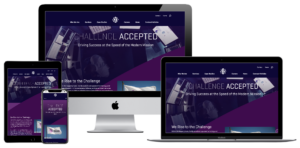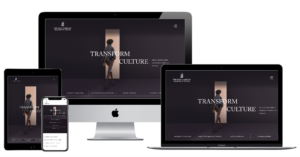A Content-First Approach.
Enterprise-level website redesigns are exciting but can be overwhelming. There are countless variables to consider – from appeasing stakeholders and business units, to ensuring an intuitive customer-first user experience that aligns with company-defined website goals and KPIs. One of the most important considerations to think about before embarking on a large-scale website redesign is content. A beautiful, new design is worthless without good content. Users want (and expect) to get value from every website they visit, and that value comes from the content. But at the enterprise level, understanding and applying a smart content strategy can be a daunting and difficult task. Luckily, the content marketing experts at Bluetext are here to help.

6 Key Content Strategy Steps to Take Before Design:
1. Conduct a Content Audit
Before investing in a big website redesign, there needs to be a thorough discovery phase that involves conducting a ROT (redundant, outdated, trivial) analysis to understand the current state of content, identify legacy content that should be removed, any gaps in the content, and ultimately understand if the current content aligns with the redesign goals. Bluetext has industry-leading crawling and scraping tools, such as Screaming Frog, to automate and provide this data. Competitive analysis and market research are also critical steps to gaining insight into how other players in the industry are applying content strategy. Some specific aspects to take note of include:
- Page structure and content flow
- Calls to actions
- Navigation/sitemap
- Linking
- Relevance to the user
- Language/tone of voice
- SEO
- Multi-media usage
2. Establish Website Goals & KPIs
Out with the old and in with the new! In order to create a successful new website, you need to identify the current weaknesses and where improvements can be made. Like any major business venture, it must begin with setting realistic goals. Be sure to benchmark against tactics and KPIs (key performance indicators) to measure the success of those goals. A flashy new website might look nice, but ultimately your stakeholders want to see quantifiable success. It’s important to audit what content is working and has high conversions. Leverage Google Analytics to see what the most trafficked pages are and what users are searching for. Setting up click tracking and heat mapping on your site provides data to help understand user behavior and guide decisions. An example of a website redesign goal mapped to tactics and KPIs may look like this:
-
- Goal: Streamline Product Page Content
- Onsite Tactics: Design product template based on journey-oriented content strategy. Reduce content to highlight the most important and relevant selling points/CTAs.
- KPIs:
- X% decrease in bounce rate on product pages
- X% increase on time on product pages
- X% increase on product page conversion rates
- Goal: Streamline Product Page Content

3. Build out Website Personas for Journey Mapping
Understanding the different personas using your website is pivotal because these users and their unique goals should inform the content requirements. For example, a large software company’s website will have multiple personas. One persona might be a new, less-informed user who is seeking a solution for a specific problem they have. Another persona may be a returning customer and therefore more educated. This informed user might be looking for product support or to try a free download of a new product.
These two users have very different needs for the website and therefore the way they navigate the site will be different, and the website content and design need to account for that. Understanding the goals of the various personas and the likely journey or path in how they use the site to achieve that goal directly impacts the content and the content hierarchy they should see.
4. Create Data-Driven Navigation
An intuitive site structure (displayed via the navigation) is integral to a great website. The navigation informs the user how the site is structured, and when done well, helps guide the user to the content they need to see. According to Sweor, “88% of online customers are less likely to return to a site after a bad experience.” Considering many customers rely on either search or the navigation to guide them, having an intuitive navigation that ensures every persona has a clear path to their destination is key. Think of your sitemap as a personal GPS through the sales funnel. It should route a user from a unique “Current Location” to the end goal of conversion. Analyze user-behavior data to better understand how different customers are using the navigation currently. Is there a significant difference between new and returning user behavior? Also, see if there are other ways customers are using the site that aren’t accounted for in the navigation that should be. Once a proposed sitemap/navigation is created, conduct usability testing to validate the new structure.
The goal of a good navigation system should be to get the user to the most relevant content as quickly and easily as possible. Much of this comes from smart design, but content plays a big role here, too. Use skimmable, digestible words that customers understand, not lengthy, internal company jargon. Users are quick to click, so using copy that resonates fast and leads the user to the right path will provide a better experience for them. This applies to content across all pages as well as navigation content. “Most of the time we don’t choose the best option—we choose the first reasonable option.” Don’t Make Me Think, Steve Krug.
There are only a few chances to convince the user that they can get to the content they need before they get frustrated, bounce, and look elsewhere at another site. As such, every piece of content needs to be thoughtful and intuitive.

5. Define Goals for Each Page-Type/Template
At the enterprise level with hundreds of products and solutions spanning multiple business units, it becomes extremely difficult to give all the content the time and nurturing it needs. It becomes tempting to simply include everything as a “catch-all”, but this is a fast-track to overwhelming and losing user interest.
As mentioned previously, different personas require different content. Defining goals for each page-type/template helps focus the content to achieve that goal. Is the call to action driving a conversion for that goal? Are the proper users being driven to this page to achieve that goal? Do these page-specific goals align with the previously set redesign goals, tactics, and KPIs? Once goals are well-defined for each page-type/template, then the content requirements and hierarchy should be thought out accordingly.
6. Determine Content Requirements and Hierarchy
Now that page goals are defined, it’s time to determine content requirements and content flow. The content should be aligned with the goals of that page and when done right, will improve conversions. The order of the content displayed is important, as users skim and expect to see the most relevant content at the top. The perfect marriage of content and design always refers back to the goals and on-site tactics. Ensure the content drives the user to perform the goal of that page (whether it’s downloading a free trial, contacting sales, submitting a form, etc.). Once content requirements and hierarchy are well defined, then it’s finally time for design!

Understanding and planning out content needs early-on makes the design process more efficient and effective. That being said, the biggest ROI for smart content strategy will be proven after launch when those previously defined KPIs improve.